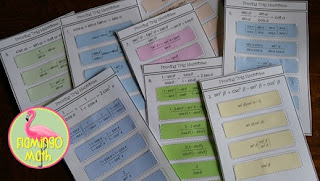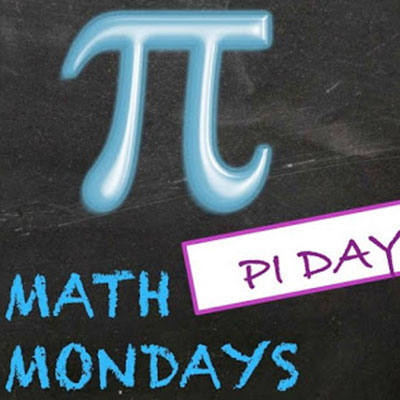 This month our Math Monday Blog hop is focused on how we help our struggling students. No matter what level of learner you teach, all of our students have gaps in their knowledge base. That in itself, is the beauty of our subject. We (teachers) are training developing brains to think and problem solve in abstract areas. Hopefully, we push our students daily, beyond their comfort zones. I take it to be part of my charge as a mathematics teacher to “hurt their heads.” In fact, I often remind my students that I’m trying to do this. If their head isn’t hurting, I’m not doing my job. They just seem to giggle at that, but agree wholeheartedly! It’s actually quite rewarding when they remind me that I’m doing a good job and they are in mental pain!
This month our Math Monday Blog hop is focused on how we help our struggling students. No matter what level of learner you teach, all of our students have gaps in their knowledge base. That in itself, is the beauty of our subject. We (teachers) are training developing brains to think and problem solve in abstract areas. Hopefully, we push our students daily, beyond their comfort zones. I take it to be part of my charge as a mathematics teacher to “hurt their heads.” In fact, I often remind my students that I’m trying to do this. If their head isn’t hurting, I’m not doing my job. They just seem to giggle at that, but agree wholeheartedly! It’s actually quite rewarding when they remind me that I’m doing a good job and they are in mental pain!
You see, this is secretly my first line of defense for helping my students who struggle.
CONVINCE YOUR LEARNERS THAT IT IS IMPORTANT FOR THEIR MATHEMATICAL DEVELOPMENT TO BE PUSHED BEYOND THEIR COMFORT ZONE!
In this way, you plant a seed that the struggle belongs in the journey. Once they have been given permission to be “less than perfect,” their misunderstandings will be an integral part of classroom discussions. This attitude gives students permission and acceptance to speak up when they don’t understand.
I often remind my Calculus students that it’s their elementary school knowledge of fractions and their middle school knowledge of basic algebra that is their nemesis. They get the concepts of tangent line and area under the curve, but they question me on how I changed a 3 into 24/8. I don’t want to let that small glitch in their brain connections become the stumbling block for finding a definite integral.
GIVE YOUR STUDENTS AN OPPORTUNITY TO OPENLY DISCUSS THEIR UNDERSTANDINGS AND POINTS OF CONFUSION.
I purposefully build opportunities into my daily routine for students to succeed and to fail. They work cooperatively during instructional sessions; talking, sharing, discussing, and refining their own personal knowledge base. During mid-chapter formative assessments, my students are placed in groups of four. Each group member receives a quiz that is similar (corresponds) to others within the group. Students have the full class period to discuss, teach, refine and process the concepts needed for mastery. It seems that the pressure of a grade brings out the best in the engagement levels. I learn more about their levels of mastery and uncertainty just by listening to the discussions within each heterogeneous group.
A CLASSROOM ENVIRONMENT WHERE MISTAKES ARE WELCOME IS A DIRECT OFFSPRING OF MY NUMBER ONE GOAL.
If I’ve developed a plan to push my students beyond their comfort zone, then I need a plan to pick them up, brush them off, and start all over again. Even if it means after a test or assessment. While formative assessments are interactive in nature, summative assessments are independent and held to a high standard. Students are given a test correction document once their end-unit tests are graded. They have a 5-day period (week) to work corrections, explain their previous misconceptions and mistakes, in order to earn back half-credit. Learning doesn’t stop just because the unit is complete.
Task cards, sorting and matching, graphic organizers, station activities, and so much more are embedded within the learning process of my classroom. For example, my PreCalculus students are encouraged and willing to try difficult proofs after they have completed a cut-and-paste activity where the thinking is all about the algebra steps needed to prove a trigonometric identity.

They can complete up to 8 different identities on their 1:1 device or try a hands-on approach with a pair of scissors and a glue stick. Either way, the activity builds confidence about the uncertainty of a complex idea.

Proving Trig Identities Cut & Paste Activity
Get Your Free Math Resources Today
Join the Flamingo Math Flock to receive news, FREEBIES and updates!
Success! Now check your email to confirm your subscription. We are happy to have you join our Flamingo Math flock! Jean




